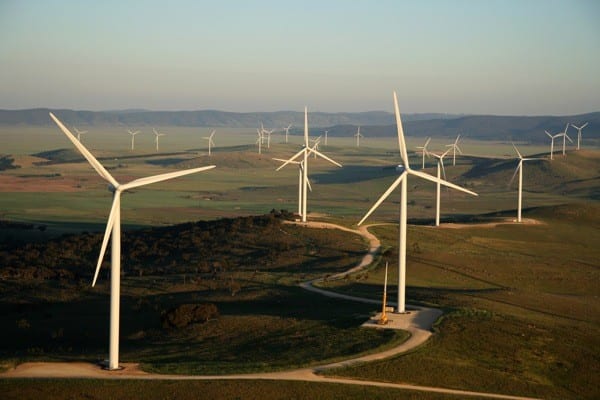Australia’s largest listed renewables-focused company, Infigen Energy, says it is confident that the fixed renewable energy target of 41,000GWh will remain in place, citing the emergence of sovereign risk among international financiers, and soaring domestic gas prices as key arguments for its retention.
 However, CEO Miles George says it could be that the target is kept, but the timeline pushed back. This could be disastrous for the industry, he told RenewEconomy in an interview, unless “compensatory” measures were introduced such as a trajectory that stopped another hiatus in new development, and an extension to the certificate life-cycle beyond 2030.
However, CEO Miles George says it could be that the target is kept, but the timeline pushed back. This could be disastrous for the industry, he told RenewEconomy in an interview, unless “compensatory” measures were introduced such as a trajectory that stopped another hiatus in new development, and an extension to the certificate life-cycle beyond 2030.
New development in the renewable energy industry in Australia has been at an effective standstill for more than a year now, thanks to the prospect of yet another review of the renewable energy target by the newly elected Conservative government.
“We wont invest in any new large renewable projects , and no one else will either,” George said. “That been the case for a couple of years – people won’t take a risk around government policy. The 41,000 GWh target is fundamental. That target should be retained, and I believe it will be. It is possible that the timeframe may be pushed back, but even that is a sovereign risk.”
Earlier, in a statement, George said: “The regulatory uncertainty resulting from the upcoming review of the renewable energy target in Australia has significantly weakened investor appetite in the sector, with many investors factoring sovereign risk into their investment decisions for the first time.
“We encourage the Australian Government to conduct an evidence-based review in a timely manner, and establish a predictable regulatory environment that supports steady investment in long term renewable energy assets that are necessary to transition Australia’s electricity sector.”
Much of the renewable energy industry has given up hope that the RET will not be diluted to some extent, particularly following the appointment of a review panel led by climate sceptic Dick Warburton, and supported by members with a history of criticizing renewable energy.
AGL Energy today would not commit to supporting the current target, and raised questions about whether it could be physically met – a claim contradicted by George, who said the only reason new projects were not going ahead was because retailers were not writing contracts.
However, George said he was confident the 41,000GWh target would remain. He pointed out that AGL Energy had revealed today that it was paying $10/GJ for gas in Queensland. This would put the price bid by gas-fired generators at more than $100/MWh, and could lead to substantial increases in the cost of fossil fuel generation in Australia.
He said lower gas prices had acted as an effective cap on the prices bid by coal fired generation, but the soaring price of gas – due to the impending export of eastern coast gas through new LNG plants – would remove that cap.
“It highlights the importance of having generation that is not exposed to volatile fuel prices,” George told RenewEconomy.
“If you accept that there will be no new coal plants built because of concerns from financiers about carbon, and no new gas plants because of the cost of gas …. It makes sense to have a steady build of renewables.
“We can argue over the time frame. But no one disagrees it is going to happen. But we need to provide an investment signal that will have reasonable level of new build.”
George said that the owners of “old, decrepit” coal fired power stations, who were shouting loudest about the RET, were simply seeking government payment to cover their losses.
“That is exactly what it is. The most affected are the most inefficient ones. They are losing money. The market should be allowed to work. They (coal fired generators) should be shut down, and not compensated for doing that.
He said the RET was required as a mechamism because it would be impossible otherwise to have new generation built to compete with 50-year-old, fully depreciated plant. He noted numerous reports had shown that the small cost of the RET would be offset by falling wholesale prices.
“If don’t have that mechanism, then the country is at risk of becoming fully exposed to market prices for gas and coal.,” George said, adding that sovereign risk is a very serious issue – “one that is entirely within government control.”
George said a trajectory was important to deal with the persistent surplus of renewable energy certificates. Without that, new projects could be left stranded for another couple of years.
On other matters, George said the company was looking to split its US assets – first with financing arrangements and then possibly through equity – so it could get proper market recognition for those assets, and also have the ability to raise capital for several promising solar projects in that country.
In Australia, stronger wind conditions helped the company reduce its overall loss by more than half in the latest period to $12 million.










